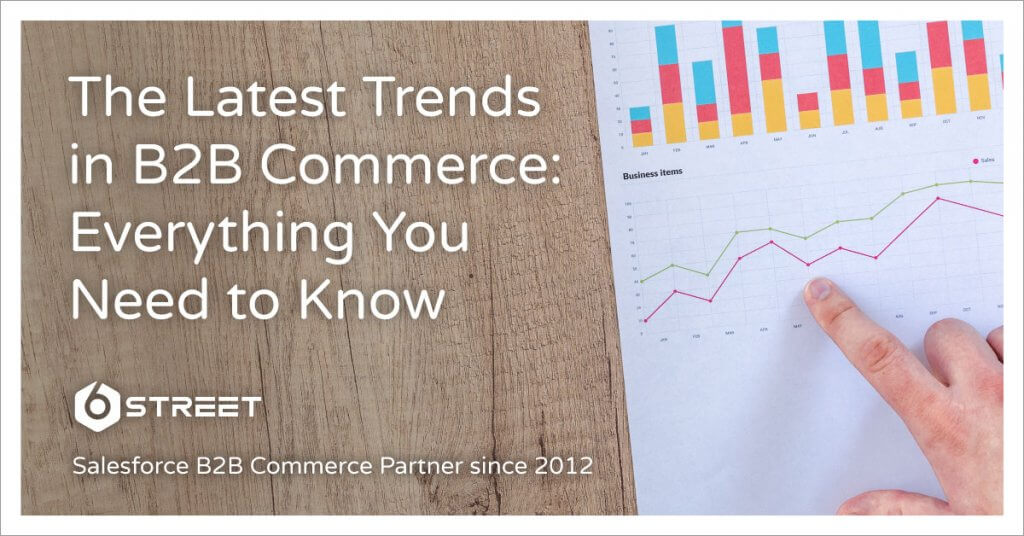Are you a business that provides large volumes of merchandise for other businesses? You may be wondering how e-commerce is fairing in this new COVID-19 landscape, and how you can stay ahead of the game to make sure your sales aren’t tanking.
By staying on top of current trends, you can make the shopping experience easier for clients. You’ll pull in more qualified leads, have an effective sales funnel, and more.
With this in mind, read on to learn all about the latest trends in B2B commerce so that you can stay ahead of the game!
Digital Strategies
More than ever before, B2B companies need to focus on their digital marketing and sales strategies. Today’s buyers are digitally-savvy and prefer self-directed experiences. According to Forrester, in 2017 68% preferred to research on their own online.
These digital strategies are meant to give clients a “B2C-like” shopping experience that’s intuitive, fast, and easy to navigate. This can include:
- Access to their own storefronts to review transaction history
- Product recommendations based on industry and buying history
- Custom catalogs and price-lists
Completing transactions via self-service helps retain customers. It also helps ease your own workload. You can include subscription methods that will automatically schedule and reschedule deliveries. Clients can also modify their orders at any time.
You can see how these digital strategies deliver clients extra value by saving them time. Interacting with your site should be a simple and efficient process. Salesforce B2B Commerce can help smooth out the customer’s self-directed experience.
Customer Experience
Not only do you need to provide an efficient and intuitive buying experience to clients, but you also need to offer exemplary customer service. Customer service is all about tuning in to the “voice of the customer” (VOC) and catering to their unique needs.
The best way to know what your customer needs is to provide easy ways for them to give feedback. You can do this through:
- Emailing quick surveys
- Phone call interviews or focus groups
- Responding to negative reviews
- Keeping track of feedback from social media mentions
Once you’ve collected their feedback, you can implement new strategies and tweak current ones to improve their customer experience. This can mean improving your products or services, working on the checkout process, or creating more educational content.
A Certified Salesforce B2B Commerce Partner can also aid companies through customer relationship management strategies.
Content Creation
In order to stand out in this digital landscape, B2B companies need to produce valuable content for clients just as much as B2C companies. By consistently creating content that is relevant and valuable for your audience, it’s more likely that your website will be ranked higher on search engine results pages (SERPs).
If the content is engaging and relevant, your clients are also far more likely to share your content and drive even more traffic to your channels. Remember that along with your website, you also want to post content in the places where you can find the majority of your clients.
This omnichannel presence will help keep you relevant to customers and qualified leads. Consider social media platforms such as Instagram, Twitch, LinkedIn, and Facebook. Which platforms are your clients more likely to use? Where would they go to research a company like yours (besides a Google search)?
Mobile Experience
Your website is always going to be the hub of your organization, so it’s important that it’s easily accessible on all devices–especially mobile. According to the Pew Research Center, 96% of Americans own a mobile phone of some kind.
If your website isn’t responsive, or mobile-friendly, customers will have a hard time navigating and engaging with your website on their mobile phones. They may need to pinch the screen in and out in order to click on links. They may be missing out on important copy or calls to action that are cut off on their smaller screens.
Worst of all, the checkout process will be cumbersome and may even be prone to user error. All of these poor customer experiences will cause the bounce rates on your website to increase and customers to look elsewhere for a company that delivers an easier mobile experience.
Meaningful Data
Last but not least, B2B companies are getting better at collecting data from their customers and extracting meaningful insights. Companies can collect data through customer feedback surveys, on-site transactions, and website analytics.
However, you can’t do anything with the data you collect if you don’t analyze it correctly. Analytics tools can help companies create reports for teams. They can also find previously unseen relationships between data points and even make educated predictions for the future.
The sales cycle length is one of the most important pieces of data because it tells companies how long it takes with a typical customer to make a sale. If the sale cycle is too long, this is an indication that you need to identify bottlenecks.
Where to Start
Now that you know some of the latest trends in ecommerce, it can feel overwhelming to decide where to start. We recommend first focusing on creating a responsive website that provides a B2C-like experience for your B2B customers.
Clients today are digitally-savvy and want to be able to do their own research and checkout on their own time. Make it easy for them, and the sales will follow!
Knowing the Latest Trends in B2B Commerce
By knowing the latest trends in B2B commerce, you’re setting your company up for longterm success. This new digital landscape doesn’t have to be daunting.
You can now use the tools available to you to foster better relationships with your customers. These tools can also improve their buying experience and collect meaningful data that helps you make informed decisions.
Ready to enhance your customer’s experience? Schedule a free consultation with a Salesforce commerce B2B consultant today!
